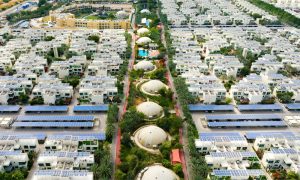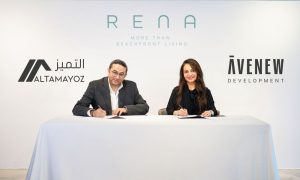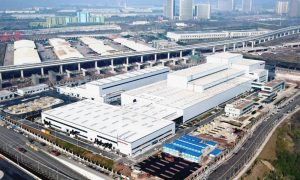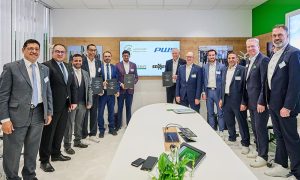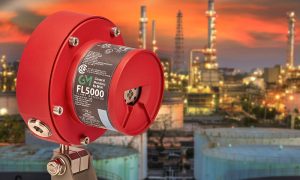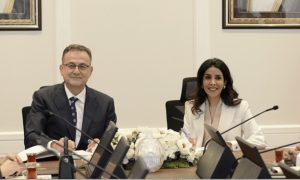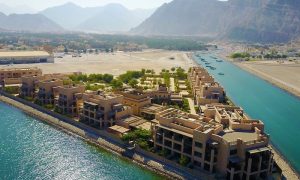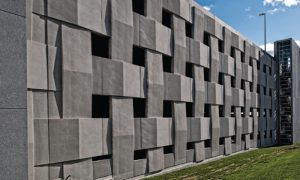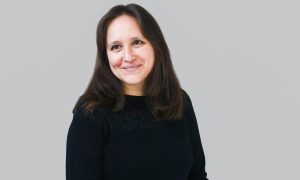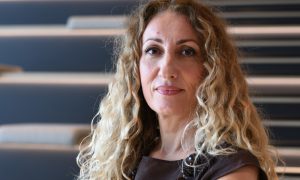Site Visit: What’s cooking in Sharjah Sustainable City?
Big Project ME meets with Diamond Developers to discuss progress at Sharjah Sustainable City and the impact the ambitious sustainable lifestyle development will have on the real estate sector

As the global movement towards sustainable living gathers pace, real estate developers are becoming increasing cognisant about the importance of developing projects, especially residential and community ones, that answer a growing list of needs from potential investors – particularly those looking to live in their projects.
In the wake of the COVID-19 pandemic, sustainability has never been higher on the agenda for the real estate and construction industries, with studies showing that ESG-compliant strategies, carbon emissions, energy efficiencies and smart infrastructure are key criteria for investment.
Meanwhile, surveys of residents also show that there is a renewed focus on health, wellbeing and leading an active outdoor lifestyle, as well as a growing realisation about their social and environmental impact. As such, there is a greater demand for walkable neighbourhoods, open spaces, and buildings that are constructed with sustainability principles at the forefront.
These shifting mindsets are indicative of a wider trend across the globe, with industries such as the retail sector seeing a strong push from consumers to be more responsible and aware of their impact on the planet and on climate change.
The UAE has not been immune to these changes either, with real estate experts reporting that even with the country’s real estate markets – led by Dubai – having seen an upswing over the last two years, there is a strong emphasis on sustainability that wasn’t there previously.
Led by the UAE government’s policies, the built environment is being pushed towards finding economically feasible solutions that can help achieve national climate and energy goals. As such, the green agenda in real estate is now firmly in the mainstream, and no company has done more to put it there than Diamond Developers.

Set up in in 2003, the real estate development firm has long been an advocate for sustainable development. In 2010, having spent seven years developing buildings across Dubai, the developer launched its most ambitious project – a wholly integrated, fully sustainable residential community. Known as Dubai Sustainable City, the project has been a tremendous success since its completion and has been a launchpad for the developer to launch other sustainable cities around the region.
One of these sustainable cities is the Sharjah Sustainable City, which is being built as a joint venture between Sharjah Investment and Development Authority (Shurooq) and Diamond Developers. Launched in March 2018, the development is located in Sharjah’s Umm Fannain, Al Rahmaniya Area and aims to be a working model for future cities.
Built around three pillars of sustainability – Social, Environmental and Economic, the SSC embraces the concept of ‘living locally’ and provides practical solutions related to food security, water and energy management, as well as natural resources conservation.
Furthermore, as a fully integrated and Net Zero energy community, it is powered by renewable energy produced from rooftop solar panels and recycles its water and waste, while also producing its own vegetables and greens to enhance food security.
In order to fully comprehend the importance of this project, Big Project ME caught up with Karim El-Jisr, Chief Sustainability Officer at Diamond Developers, and Carl Atallah, Marketing Director at Sharjah Sustainable City, to hear from them about why their project is so important to the regional real estate landscape.
“Sharjah Sustainable City is a 67ha development, making it a bit larger than its predecessor or the ‘proof of concept’ in Dubai. It is divided into four phases and we’re now finalising Phase One. The expected handover will begin this month (in June) and will extend over a period of a couple of weeks or months,” says El-Jisr, adding that there is a 90% uptake of villas in Phase One.
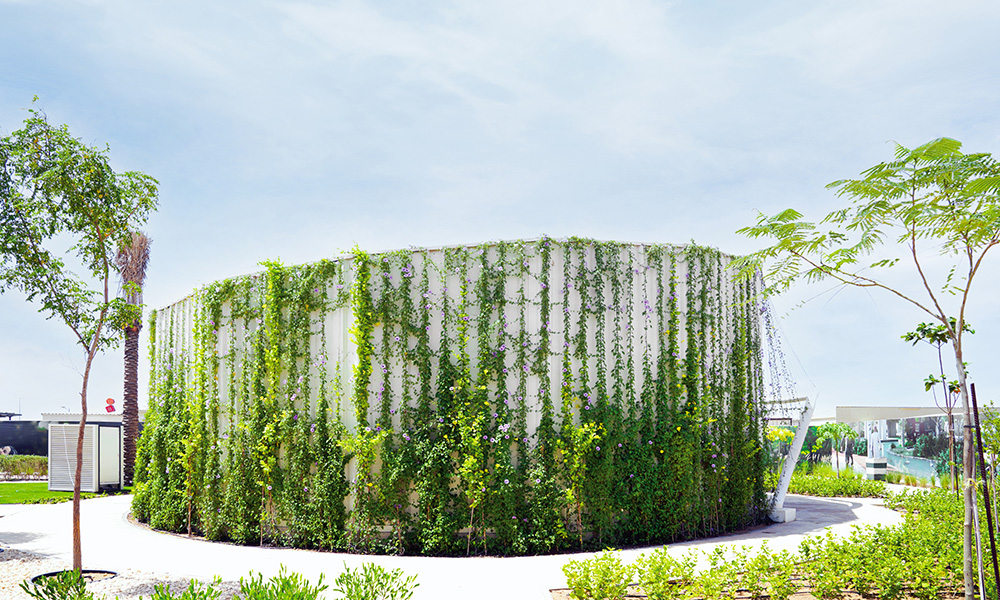
“Meanwhile, we also have an overlap because Phase Two construction has commenced as well, and you have overlapping phases. For now, however, all eyes are on Phase One, and the infrastructure surrounding it as well – this includes a portion of the spine, the ring road, the public spaces and domains, the pocket gardens inside the sikkas, the main entrance – all of these have to work together to begin to deliver the community,” he adds.
With Phase One on schedule and nearly ready for handover, Atallah says that attention is shifting towards Phase Two, which will also be handed over in Q3 or Q4 of 2022. However, he reveals that the next few phases of SSC, which is currently in a fairly remote area outside Sharjah City, will also be crucial in terms of improving accessibility to the development.
“The government has big plans for the Al Rahmaniya area,” Atallah says. “We’re the first-of-its kind project in Rahmaniya itself. You’ll see a lot of development in the road infrastructure, while the access from Mohammed Bin Zayed Road will also happen. We want people to access our site easily from the main highways. We know that our project is strategically located – there’s proximity to the airport, proximity to Sharjah is there, and facilitating access to the development is being worked on and is in the pipeline,” he explains.
He adds that while the project team has faced challenges along the way due to the pandemic, these haven’t been insurmountable, and the project is still within the handover timeline that was set contractually with clients.
“The client inspections happened a couple of months ago, and now it’s just a matter of us working with the government and the authorities to finalise connections and so forth. These are usually done at the last. The villas are almost done (for Phase One), and there’s a lot of landscape work happening now. We’re making the project greener,” he says.
While the pandemic may have posed a challenge to the delivery of the project, El-Jisr says that it also brought some unexpected opportunities along with it. One such benefit was the incremental interest in SSC and what it offers, as customers and buyers desired a change in lifestyle and placed greater importance on wellbeing.

“This is really an outcome of the pandemic – people now realise that lifestyle is so critical to wellbeing, mental health, having neighbours, access to nature and feeling safe and secure, as well as not being confined in a small physical space. That’s the opportunity (that was presented to us) by the pandemic.
“We’ve also seen a shift towards horizontal development, but also towards smaller units. Although we have four phases for the development, they’re not identical. In response to consumer demand, we’re accommodating some changes in the typologies,” El-Jisr adds.
Atallah points out that the pandemic has also had an interesting impact on buyer trends, with June and July of 2021 showing strong performance compared to historical data.
“This is because a lot of families – and a lot of the wealth – stayed over here, and people wanted to invest in safe investments. We saw a lot of local wealth being put into the project. The types of clients we get in Sharjah are a bit different to other emirates in that people tend to buy to live – it’s not the mindset of an investor – people want to come and live in the community.
“Going back to Phase Two, what I think we did well – and this because of our agility as we’re not a huge developer that has to go through a hierarchy of decisions – is that we heard from our customers when we built Phase One and we were very open about it. Some clients wanted certain things – there were two or three types of things that customers wanted, and we listened to that when working on the feasibility of Phase Two,” Atallah says, adding that this willingness and approachability has led to Phase Two being successful, as it caters to what customers actually want.
With Sharjah Sustainable City looking to be a fully integrated, Net Zero energy community that offers residents a sustainable lifestyle, Diamond Developers and Shurooq have worked with their project partners to introduce a number of state-of-the-art technologies.

The project has been designed with the aim of reducing Sharjah’s carbon footprint and will be fully powered by renewable energy that is produced by solar panels, while water and waste will be recycled. Furthermore, agricultural produce will be grown within the development in biodomes, utilising modern technologies such as vertical farming to help create a self-sustaining community, while also generating savings of up to 50% on utility and energy bills, El-Jisr and Atallah say.
There will also be an extensive network of walking and cycling paths to promote an active lifestyle and clean mobility, thereby reducing emissions. This includes 11.8kms of rubberised jogging tracks, 1.6km cycling tracks, 8.4kms of pedestrian sikkas. The city will also feature electric mobility solutions, including charging stations for electric vehicles and a distance of 2.4kms dedicated to electric autonomous vehicles. These initiatives aim to improve the quality of life for residents without compromising the requirements of future generations, as well as providing opportunities for research on how residential communities can reduce carbon emissions.
Waste generated is utilised in order to create a circular economy, with plans in place to build a biogas plant to treat organic waste (food waste, green waste, and sludge) and convert it into electricity and/or thermal energy. In addition, residues from the biogas plant will be dried and used as fertiliser for landscaping, while a Sewage Treatment Plant (STP) to treat wastewater will produce Treated Sewage Effluent (TSE) for landscape irrigation, achieving 100% water recycling, and avoiding emissions associated with tankers.
Dubai Sustainable City was delivered in 2016, and since then sustainability technology has evolved considerably across multiple industries. However, where Diamond Developers benefited was by having a real-world environment to see what worked and what didn’t, and how effective those technologies were when asked to operate in the real world.
Therefore, when it came time to work on and deliver Sharjah Sustainable City, El-Jisr says that the team behind the project was able to take the lessons learnt from Dubai and use that acquired knowledge to develop an evolved version of the city in their plans for Sharjah.
One such example is how the villas were oriented so as to maximise shading and avoid the sun, with all south-facing facades closed to reduce heat gains. The villas also have highly insulated UV reflective walls, while roofs and windows reduce air-conditioning loads electricity power consumption, and operational carbon.

The villas themselves come equipped with a rooftop solar PV system, in addition to having been built with thermally insulated construction materials and windows, smart home automation, water-saving appliances, and energy saving electrical devices, the duo from Diamond Developers say. All of these measures are projected to deliver savings of at least 50% on electricity for residents, including cooling, compared to conventional housing in Sharjah.
Carrying this theme forward, in the outdoor areas, pavers with high Solar Reflective Index (SRI) to reduce heat gains and reduce thermal discomfort have been installed, they add.
“To give some context, the current Green Building Regulations and Specifications (in Dubai) require an insulation value (U) of 0.30 for roofs, 0.57 for walls, and 2.10 for glazing. In Sharjah Sustainable City we will achieve insulation values of 0.18 for roofs, 0.26 for walls and 1.20 for glazing, so as you can see our design is achieving impressive results and will significantly reduce the carbon footprint of the community,” El-Jisr explains.
“Cities like Sharjah Sustainable City are essential in showcasing the high standard of living that can be achieved in a sustainable community, to encourage other developers to follow suit and ensure the future health of our planet and its ecosystems, and air quality is of course a big component in this equation. Indoor Environmental Quality in the villas is ensured through natural ventilation. In the apartments and commercial outlets, Indoor Environmental Quality is provided through Fresh Air Handling Units (FAHU) and CO2 sensors,” he adds.
As Dubai Sustainable City continues to provide proof that the concept can work, and the ongoing interest in the Sharjah Sustainable City shows, the demand for sustainable living is only growing. In order to capitalise on this momentum, El-Jisr shares that Diamond Developers will soon be launching another sustainable city in Abu Dhabi, and that the developer has already launched a project in Oman, in cooperation with Omran.
“The Sustainable City is a brand, and it comes with certain guidelines, and these guidelines keep evolving so that we can capture the latest in technology, in lifestyle, or Artificial Intelligence, for example. Our vision is to seed one sustainable city in every emirate in the UAE and in every country of the world. We’ll start with the big climatic regions and then we want that seed to grow and inspire other developers and policy makers.

“As we move away from this climatic zone, we’re going to capture and see new opportunities in Southern Africa, in the Mediterranean Basin, in Europe, etc, where the climate is much more inviting and less challenging, which means that we can achieve sustainability (easier). By showing that we can do it (be sustainable) in one of the harshest climates in the world, it should be downhill from here,” he concludes.
Read more:
- Diamond Developers and Omran announced $1bn mixed-use project in Oman
- Sharjah Sustainable City: Green living
- Aldar and Diamond Developers combine forces to launch new $489mn sustainable community

